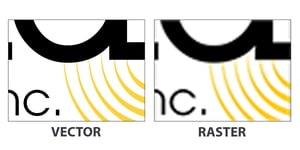
You’ve been there. A co-worker asks you to find a document on the shared drive. Despite some searches, you’re unable to find exactly what was requested. Frustrated (and perhaps a bit embarrassed), you confess you can’t find the file, only to have the original requestor cue it up, leaving you feeling slightly inadequate, but also curious as to why it’s so difficult to bring order to your team’s data.
This happens frequently in office settings. In our attempts to organize information we typically just hoard it all in one place, applying a loose structure, and as the months and years go by, the oft-feared shared drive becomes an untenable beast—a hydra incapable of being vanquished.
But it doesn’t have to be that way. With a few tweaks and changed mindset, getting data organized is a lot more accessible than most professionals realize. Here are three common misconceptions about information repositories that are keeping you from getting organized:
- If you build it they will come. When we see a problem, we naturally think that by acquiring a product, the issue will remedy itself. This works in many contexts. (If my car’s brakes are worn, I need new pads. Therefore, I buy and install new pads. Brakes work. Rejoicing ensues.) However, information management is more complex than A is solved by B. Look at Wikipedia, for example. It looks simple on the surface, but it is actually the result of millions of people donating their time and resources to build it to the point that it is self-sustaining. It is incredible. It is also an anomaly. A Sharepoint site for your team is not self-sustaining and requires constant attention and maintenance. A good platform is necessary, but not sufficient.
- It's just a file system! Knowledge management today requires specialized skills. Your data is not simple, so why would you limit yourself to organizing it by an archaic file system? Trying to find information when all you have is a list of garbled filenames is an inefficient use of resources. Useful information organization involves tailoring data so that it has rich linkages between elements; portals that provide summaries; organization and tagging by geography, topic, and time; all in a navigable interface. Your goal should be to establish a system that is easy for every employee to use.
- Everything is miscellaneous. The open wild of the internet regulates itself in many ways, with freeform tagging, reviewing, backlinking, and SEO practices normalizing content. But this approach does not work when organizing your data. Simply put, your team is a machine that requires precision and maintenance, and you likewise expect specific output from that machine. You need structure to achieve that. Your data should be just as specific as your goals.
Avoiding these knowledge management mistakes is easy. Stop assuming that you can do this in-house with whatever platform your IT department provides. Instead, take stock of how your information is currently stored and used. Then outline what you need from your knowledge base on an everyday and long-term basis. Do you need it to be the institutional memory of your office, so that new staff can get up to speed efficiently? Is it to provide validated information to management for strategic planning? Then set a realistic goal based on the capabilities your staff. If it can’t be done in house, consider outsourcing, which will allow a company devoted to knowledge management to perform your housekeeping so you and your team can keep your focus where it needs to be—on your work.





